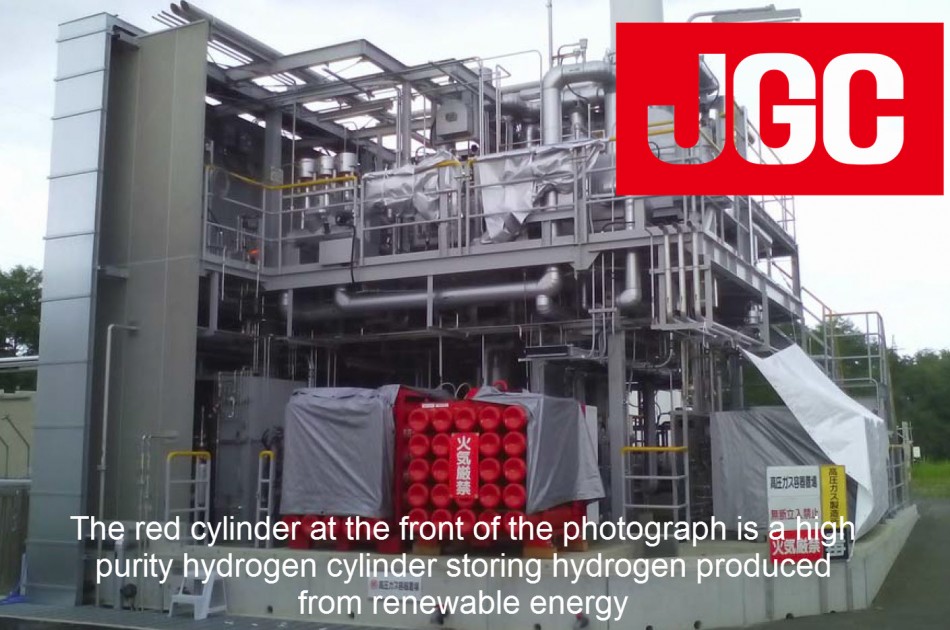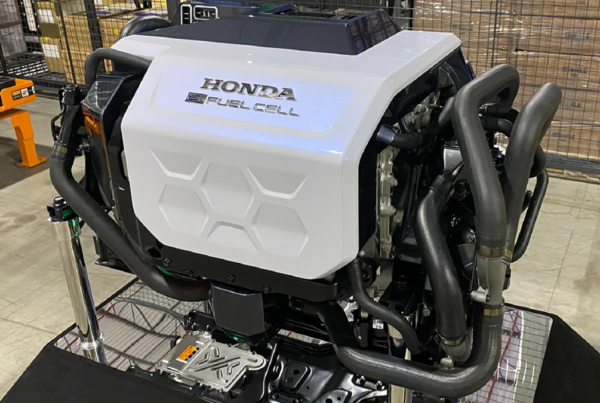
Yokohama Japan – JGC Corporation and the National Institute of Advanced Industrial Science and Technology (AIST; hereinafter referred to together as the JGC Group), under the auspices of the Cross Ministerial Strategic Innovation Promotion Program*1 (SIP) “Energy Carriers” (Management Entity: JST), led by the Cabinet Office Council for Science, Technology and in the world’s first success in the synthesis of ammonia with hydrogen produced through the electrolysis of water by renewable energy, and generation of electricity through gas turbines fueled by synthesized ammonia.
Outline of Current Research and Development
Since 2014, JGC, based on its evaluation of the use of ammonia as an energy carrier has participated in the SIP “Energy Carriers”*3 research title “New Catalysts for producing Ammonia and the Use of Hydrogen Produced Through the Electolysis of Water by Renewable Energy for the Production of Ammonia”.
In May this year, JGC, together with the AIST and the National Institute of Technology, Numazu College, as well as our subsidiary, JGC Catalysts & Chemicals Ltd., achieved success in development of a new ruthenium catalyst*4 capable of efficiently synthesizing ammonia at a low temperature and low pressure through improvement of carrier and catalyst production methods using catalysts. The JGC began operation of a demonstration plant (capable of producing ammonia at the rate of 20 kg per day) that synthesized ammonia using a high purity hydrogen gas cylinder installed on the premises of the Fukushima Renewable Energy Institute, AIST in Koriyama City, Fukushima Prefecture for this catalyst and temporary hydrogen provision.
Through this demonstration plant, together with confirming the high activity at a low temperature and pressure of the newly developed catalyst, the JGC Group verified the enabling of a change in ammonia production volume through rapid operational condition changes when using renewable energy, which was an issue. At this time, instead of the high purity hydrogen gas cylinder used for the demonstration plant, the JGC Group tested synthesis of ammonia using hydrogen produced through electrolysis of waterthrough power generated by solar power equipment installed on the same premises, and realized a demonstration plant (power generation: 47 kW) through gas turbines fueled by synthesized ammonia.
Furthermore, cooperation was received from the Fukushima Renewable Energy Institute, AIST for the test of hydrogen production, and cooperation was received from the SIPEnergy Carriers (Ammonia Direct Combustion) Team for the test of ammonia gas turbine power generation.
Group, as well as power generation fueled by ammonia production and this, and advances the establishment of an energy chain that utilizes ammonia that does not emit CO2 (CO2-free) from production to power generation. Going forward, the JGC Group will continue to carry out the ammonia synthesis test and research and development toward cost reduction of ammonia production utilizing renewable energy, together with actively working toward energy diversification and realizing a low-carbon society by achieving the vision promoted by SIP Energy Carriers research of “Japan creating an innovative low-carbon, hydrogen-fueled economy and
taking the lead in hydrogen related industries on the world market” by the year 2030.
Read the most up to date Fuel Cell and Hydrogen Industry news at FuelCellsWorks




